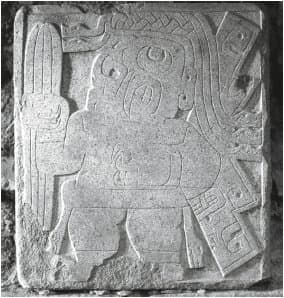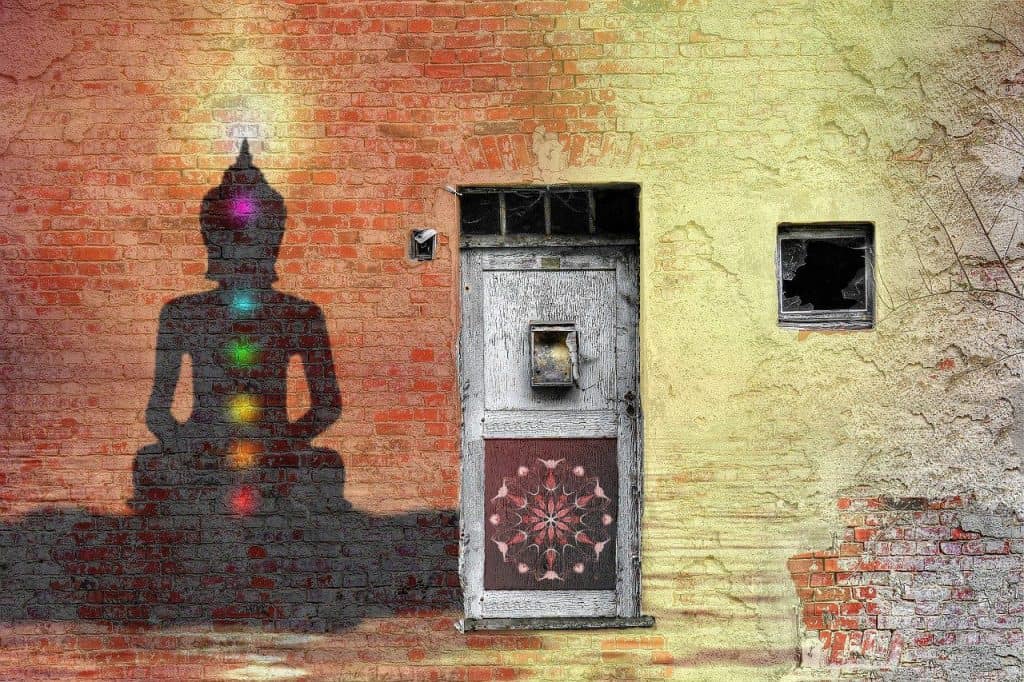What is the practice of Shamanism? ?What is a Shaman? Principles, concepts and teachings of Shamanism. Types of Shamanism in the World.
Reading Time: 40min
What is the practice of Shamanism? † † † †
Shamanism is a healing system, a path of ancient wisdom, a practical philosophy, spiritual discipline and a way of life. It is estimated to be between forty and twenty thousand years old.
It emerged in different parts of the planet (on all continents) and was not, nor is it, exclusive to any particular ethnic group. It has been and is practiced in various geographical and climatic regions: jungles, forests, mountains, plains and deserts, tundra, arctic, and coasts; and in areas of varying population density, from the most populated to the most isolated from nature.
So many years and so many cultures have given rise to a great diversity of shamanic traditions, so it is sometimes difficult to encompass them all in the same discipline.
However, one can speak of "shamanism" (in the singular) because these traditions share a worldview, a quest, and a way of relating to life and the environment.
The four pillars of the practice
In order to understand how shamanic practice is carried out, it is useful to differentiate four phases or aspects, which we will call pillars.
Although they are described separately because each one is a specific procedure, in reality they are in constant interaction, they are interdependent and their practice takes place in a circular process.†
It is a circular process in the sense that, once the four steps have been carried out, the process is usually enriched by a new cycle from the previous one. Likewise, the order of these steps is dynamic and variable, so that it is not always necessary to follow the same sequence.
The pillars are the ones that follow:
Establishing the objective or purpose.Build energy or power.Cleansing or releasing the path.Connect to sources of help.Establish the goal or purpose
Establishing the objective or purpose is to define what we want to achieve in the present and why we are going to carry out a particular practice.
The purposes can be broad and general, or concrete and specific. Increasing the energy level, growing spiritually, harmonizing, achieving well-being and peace, having more confidence would be examples of general purposes.
Concrete purposes are defined more narrowly and precisely. Examples of these would be to have more energy available to run for a while in the morning, to have kinder attitudes towards a particular person, to resolve a certain conflict, to value something in particular, to relax before going to sleep, to take the next step in the development of a skill or ability.
In general terms, we could say that when we establish clear and specific objectives, we can be more effective. This does not mean that we should not set ourselves something general, but that it is usually more useful to work with something in particular, especially if we are in the middle of learning or putting something into action.
Although from the spiritual perspective these specifications would not be necessary, since the Spirit knows everything, for the rest of our being, that is, our physical, emotional and mental aspect, the specification is of great help.
Defining what we want to achieve does not imply "guaranteeing" results, because things do not always unfold in time and form according to our criteria, desires, and personal expectations, but rather they unfold according to the vibrations of the spirit.
To establish a purpose is to define where we want to go and how we are going to respond to our circumstances, what we want to change and transform in relation to our experience of reality, what we want to be, do or think. It involves defining a direction and doing all that is required to get there.
Building power or energy
All human beings have, or are in fact, energy. Energy is vibration, movement. Power is the ability to direct energy toward some goal.
To increase energy means to increase vibration or movement, at any level of expression: physical, emotional, mental and spiritual. To increase power means to increase our ability to consciously and voluntarily direct energy towards a given objective.
The more energy we give to something, the greater its deployment. How do we give energy? Fundamentally, through attention and intention. But in addition to energy, we need power, the ability to direct that energy towards a goal.
How do we direct energy? Basically through the processes of choice. What do we choose? We choose, for example, the value that things have for us, their importance and their meaning.
We also choose our intentions, actions, thoughts and images, as well as the most suitable techniques or methods to achieve our goals and transform ourselves.
Clearing the way
This is another fundamental part of our practice: freeing the path of blockages and interference so that energy and power can flow properly.
What are the fundamental blockages? Synthetically we can say that they are the following:
On a physical level: excessive muscle tension.On an emotional level: fears, anger, and guilt.At a mental level: conflicts, doubts, and confusion.At a spiritual level: lack of faith and confidence.What helps to release these blockages?
On a physical level: relaxation.On an emotional level: acceptance and calmness (healing fear, anger, and guilt)On a mental level: decision or choice (resolving conflicts, doubts, and confusion).On a spiritual level: connecting with the Source.Connecting to sources of help
The shamanic path seeks to integrate the spiritual experience into the material world. It does not seek to transcend the physical world, but to harmonize our relationship with it and experience both worlds (spiritual and material) as two integrated aspects of the same reality. The material world is the manifested aspect, and the spiritual world is the invisible and non-manifested aspect.
Everything that exists on the planet has its spiritual counterpart, with which we can connect, exchange energy and information. In the spiritual world, there are also spirits, energies or helping forces with which the practitioner can interact. These energies or forces provide us with guidance, knowledge, teachings, protection and permanent help in our lives, even when we are not always aware of it. We can connect consciously and deliberately to seek guidance, healing, love, power, and wisdom.
Depending on this perspective, we all have helping forces, whether we believe it or not. Becoming aware of this connection allows us to go beyond our personal boundaries and transcend our sense of separation from Source.
The spiritual forces collaborate unconditionally with us, with our purposes, growth and development; they respond to our questions and requests. Through the practice we learn to listen and interpret their answers.
There would be much more to say on each of these topics, but here I only wanted to make a brief presentation. And now, a final comment.
Since time immemorial shamans have accumulated observations and experiences about life and what helps us to live in harmony on the planet. The shamanic practice may be seen as something "supernatural", but in reality it only encompasses a greater extent of the natural. This practice goes beyond habitual perception, beyond notions that limit existence to what we can think, see, touch or hear.
To walk this path it is not necessary to start from trust. Shamanism is a pragmatic discipline based on personal verification. When trust is not a starting point, it is usually a point of arrival and arises as a consequence of the persisting and adequate practice.
As experience is gained, trust increases, and the greater the trust, the greater the effectiveness. The process is again circular: experience strengthens faith, and faith opens us up to ever greater levels of effectiveness and experience.
Everyone is somewhere in the circle. To keep moving forward we need to define where we want to go, increase our energy, clear the way and remember that we always have help. When we build the pillars, the Universe helps us to build.
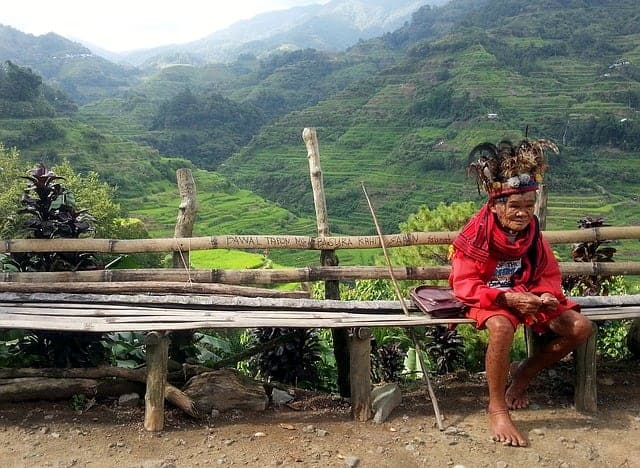
What is a Shaman? Different types of Healers
It would be very simplistic to assume that all shamans are great teachers or exceptional sages. Shamans arise from the human collective, and therefore in this select group of people we find all aspects of human nature. Like other people, shamans exhibit different skills, talents, and motivations within their vocation.
Within their collective, shamans differentiate between the apprentice, the average individual, the one who is good at his or her job, and the true master. There is, therefore, a first category that relates to skill level.Obviously, there are shamans who are more skilled than others, regardless of their years of experience.
Experience is important, although it is not everything. Apart from skill and years of experience, one shaman may have more talent than another. This manifests itself in values. Values are related to what is meaningful and important to the shaman, and determine what a shaman will or will not do with his or her talents, skills, and knowledge.
There are four value systems that influence the behavior of shamans. Thus we can find everything, some mediocre and others exceptional:
1. Survival-oriented shamans.
The first and most primitive of the shamanic value systems is the one focused on survival. These are usually very superstitious, distrustful and willing to do anything to survive. This may include killing their opponents, practicing black magic or sorcery to harm others and achieve their selfish ends.
They are absolutely ruthless and do not understand concepts such as love, service or altruism. They often sacrifice animals and use intoxicating substances for their rites, such as alcoholic ferments.
Their power is based on fear, and their use of the plants of power is usually for divinatory purposes ( where we find hunting, enemies, etc.), with the purpose of purging the physical body or as a means of acquiring courage for war.
The visions with the plants of power are usually chaotic and without apparent meaning, so they are considered an unpleasant side effect and do not usually sing icarus (the medicine songs that activate the powers of the plants).
They are not very intuitive, they are rigid and inflexible and their way of thinking is that any problem or illness is caused by others and they perceive others as enemies.
2. Self-oriented shamans.
After the survival-oriented shaman comes the category of shamans who tend to give priority to their reputation. The important and significant thing is to make oneself known and to be successful regardless of the means employed to do so.
Some are very skilled in handling the physical and energetic world and have some help from the invisible world, although not on a higher level. And although in many cases they heal people, that is not their motivation, but to become rich and empowered.
They are people who engage in shamanism as a business, not as a vocation and use their techniques or knowledge to satisfy their selfish purposes. Sometimes they show a great charisma with which they attract people, but it is only the visible layer of an excessive ego.
3. Service-oriented shamans.
This group of shamans is motivated by service and helps others. They have a deep understanding of people's psychology and generate great empathy in people. They do not necessarily draw on their tradition for guidance, but rather allow themselves to be guided by it.
So it is not surprising that they incorporate elements that are not from their tradition if they consider that they benefit people. These shamans are flexible and open-minded and show great healing powers and are always willing to help others. They have the ability to handle certain kinds of invisible allies that help them in their work.
4. Wisdom oriented shamans.
Wisdom oriented shamans are the great teachers. They are very intuitive, they see others as transparent. They tend to be direct and are very compassionate and loving. They are highly respected and often even leaders of their communities. They show great skill, strength and humility.
Their abilities sometimes become legendary as they master both physical reality and the invisible world. They have a "vertical" vision of the human being and stand out for their impeccability. They are usually accompanied by beings of light, great invisible beings that are invoked in the ceremonies for the transformation and healing of the participants.
Who can be a Shaman?
Usually, individuals are initiated into shamanism in three main ways: self-decision, hereditary transmission, and the confrontation of a crisis that leads them to consider the role of shaman. No matter what the method of selection, the future shaman must participate in a period of rigorous training and pass a series of tests.
A shaman is usually a person with very special characteristics within his or her culture. For example, in some cultures, the fact that a person is born with a physical deformity is a sign that he or she may be a shaman.
In others, if a person manages to survive a lightning discharge then they have shamanic potential, and in some communities being a woman is a requirement for becoming a shaman. Several cultures understand that to be a shaman one must first be ill, physically or emotionally, and go through the process of healing from that illness.
In most cultures, becoming a shaman requires a process characterized by extended periods of loneliness and isolation. The future shaman has to face different types of sacrifices, trials, and learning.
Shamanic initiation is a complex and painful process where often the mental and physical health of the individual is at stake. It is a period where the person interacts with the spirit world with the aim of learning about the nature of illnesses and ways to cure them.
A predominant theme in shamanic initiation is death and rebirth. The shaman has visions where he perceives his body dismembered or perceived as a skeleton. In these visions, the future shaman experiences his death and then resurrects as a totally transformed person.
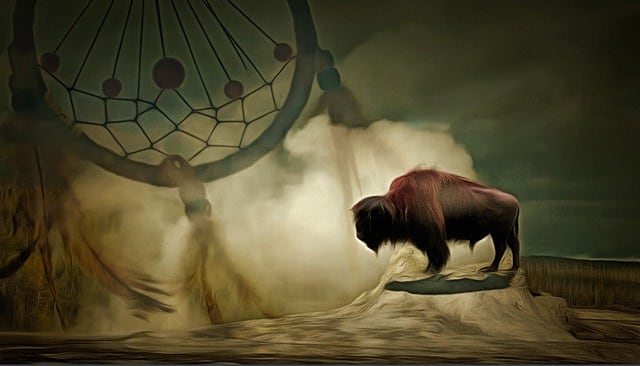
Shamanic worldview
For the shaman, the universe is divided into three worlds: the underworld, the middle world, and the upper world. These three worlds are known in various cultures as the Cosmic Tree.
In the underworld are the animals of power and the spirits of the dead. In this world the shaman is confronted with everything that threatens the health of the individual. Also, in the underworld are his spirit guides and the lost souls of his patients. This lower world is symbolically represented by the roots and by the serpent.
The upper world is the one where the spiritual masters, the gods and the higher spirits dwell. Shamans travel to the upper world to obtain knowledge and wisdom. That superior world is represented by the branches of the tree and the condor.
And the intermediate world is the one in which human beings live and constitutes the ordinary reality we know. Shamans can travel to this world to control bad weather and to know what is happening elsewhere. This middle world is represented by the tree trunk and the puma.These three worlds are connected by the so-called axis mundi.
In the shamanic worldview there are no dogmas or fixed rules, although it is based on a series of premises or principles, which can be synthesized as follows:†
Everything is energy and everything has some degree of consciousness: everything is alive. †In the Universe everything is connected and we can experience the connections and communicate with all things. †The Universe has a material and a spiritual aspect and these are not separate, even though we perceive them as separate. †The spiritual aspect creates the material.We can experience connections and communicate with all things.We can learn, get help, healing and guidance from the elements of nature.We can consciously and deliberately access the spiritual plane to connect with sources of Love, Power and Wisdom and co-create our experience of reality.We can communicate with nature and the spiritual world through direct, symbolic or intuitive experiences.This worldview is (in current terms) symbolic, ecological and holistic.The shamans already knew from ancient times, many of the things that with time, have been corroborated by science in our days. They already knew, for example, that matter and energy are a continuum, that energy can be transformed into matter and matter into energy, that our consciousness and intentions influence and modify both matter and energy.
Principles, concepts and teachings of Shamanism
On a general level, shamanism is based on the idea that the visible world, also called the natural world, is dominated by a series of spirits or forces that we cannot see but which affect and trigger effects on the lives of human beings on this plane.
In this sense, unlike other religions that are deeply associated with animism and are led by members of a society, the shamanic tradition uses particular knowledge and skills to find the answers it seeks.
Although there are many variants of shamanism around the world, there are a number of elements that they share and in which they coincide since their first practitioners and their first expansions, among which are fundamentally the following:
The shaman is able to establish a communication with the spirit worldSpirits exist and they play a fundamental role in human life and in human societies.The shaman can evoke images of animals to serve as signs or guides.In shamanism, spirits can be both good and evil.The shaman can extract his spirit from his body in order to enter the supernatural world.The use of techniques to induce shamanic trance is generated to incite visionary ecstasy.Conception of the soul
In most cultures, the soul is used to explain phenomena that seem to be related, so key aspects such as healing are related to the soul from the belief system of people who are led by the shaman, since this process allows the recovery of the soul when it suffers from a disease that must be cured.
The illness
It is believed that the causes that provoke the appearance of illnesses are due to the spiritual world, since it is the malicious spirits or witchcraft that affect human beings, so shamanism seeks a cure from the spiritual world to counteract its physical and spiritual effects and thus heal it.
Thus, the shaman enters the body of the sick person to confront the evil spirit in him and succeeds in healing him when he banishes the malicious spirit from his body.
In addition to this, shamans from different places use a regime of herbs to complement the treatment, so many of them learn about the use of plants and thus can take advantage of their effects and their healing properties, however, this can only be done after asking permission from their guardian spirit.
Spirits
Without doubt one of the key elements of shamanism is the belief in spirits, which, it is believed, in different cultures, can also explain different phenomena.
An example of this is the importance of the storytelling, which allows a better understanding of a person's belief system, as well as the ability to memorize texts, songs, even play an instrument, since this would be a sign of their ability to achieve contact with spirits.
Witchcraft
The belief in witchcraft is another of the most frequent elements within several societies that practice shamanism. Part of the traditions considers that shamans are those who can heal acts caused by sorcerers who wish to do harm, although others consider that shamans have such power to even kill, which shapes the belief that shamans not only do good but can also do harm.
Methods
The process of the shaman in the transition of consciousness when entering the trance, may involve the use of various methods that are used absolutely or even together, among them are activities such as dancing, singing, listening to music, playing instruments such as drums, fasting, conducting vigils, consumption and use of potent plants such as incense to alter the state of consciousness, cannabis, ayahuasca, san pedro, and tobacco, among many others.
On the other hand, another essential aspect of the shaman is his diet, which is closely linked to the particular customs of his tradition, since different restrictions are fulfilled according to his beliefs.
One of the most used diets by shamans and apprentices is the one constituted in the ayahuasca ceremony, which abstains from consuming foods that contain tyramine since they can induce hypertensive crises when they are consumed with monoamine oxidase inhibitors that are contained within the ayahuasca brews.
Music in shamanism
Music and songs are essential elements within shamanism and are related to its traditions in various cultures. Some of the songs used are used as a process of imitating the sounds of nature, which can fulfill various functions that can be initially separated from shamanism, such as attracting hunting animals, entertainment, among others.
Thus, music, as one of the oldest arts in the world, seeks to connect the human being with his spiritual self in which the vibrations of the spirit seeks the spiritual path to access his inner god and to the spiritual entities that provide him with the wisdom and strength not only to heal but also to resolve conflicts within this earthly plane.
The existence and what exists†
For the follower of shamanism, everything in the world is linked to everything. Although this belief is somehow close to pantheism, the truth is that for shamanism is much simpler, but also much more profound, since it considers that the world works as a large network in which everything that exists is maintained, and its knowledge allows to put in contact anything that is created at an energetic level and at a material level.
In this way, shamanism considers that everything is alive, from the stones to the stars, the trees, the rivers, the animals, etc., which have their own vital vibration that not only connects them but also shares with everything that exists.
In addition to this vital vibration, everything that exists also contains a characteristic consciousness that separates from that of the human being, although it may or may not unite with it. Ultimately, in shamanism there is the soul in everything, and this can be understood.
Conception of reality
For shamanism, there are parts of reality that can be internal, however, they can still affect external perceptions and regulate them in such a way that they can modify precise knowledge and in this way, external reality, producing changes, alterations and modifications in this reality. For this reason, the shaman works to recover and build harmony in the environment in which he or she finds himself or herself and in the human being who is ill.
Shamanic practice
The journey of the shaman's consciousness outside the limits of ordinary reality is the particularity of his practice, his specialty. It is through his trance that the shaman enters into contact with the spirit world and, from these parallel worlds, retrieves information which will be crucial for the maintenance of the well-being of the community and its members.
For the shaman, the purpose of the practice of healing is not to avoid death or pain but to help the individual connect with his soul and find meaning in life. Finding the purpose of life will let the individual know his place in his community.
From this perspective, illness has its origin and meaning in the individual's inner world. To be healthy means to be in harmony with the different dimensions of life and everything around us.
In essence, we should say that not all shamans heal in the same way. But there are some principles that are common to all shamans to restore harmony to people. Some of the most commonly used methods in shamanic healing are: the shamanic journey with drums or rattles, medicinal plants, psychotropic plants, incense, chants or the imposition of hands, to name a few examples.
Rites of Shamanism
The diffusion of shamanism has generated a series of changes within the shamanic rites, but it is possible to identify a series of aspects that have not been modified, among them we find the following
†1. A large part of the rites begin with the purification of the shaman, as well as the purification of the patient and the people who accompany the process. This will be done with a fumigation, for which sacred herbs are used, followed by a ritual bath or a steam system. This process is also called energetic cleansing.
2. This is followed by the ritual of offering and propitiation, which includes rhythmic dance movements, followed by the consumption of substances with high or moderate hallucinogenic value such as Andean Ayahuasca. However, this last step may differ from one culture to another.
After this, the shaman makes a diagnosis when he reaches his state of relaxation with the help of the pendulum, although it can also be replaced by the rattle or the maraca. With the use of this element, the shaman evaluates and explores the body of the patient, who remains lying on a surface with the palm of the left hand down, while his right hand waves the maraca over his own hand.
When the first change in the sound of the maraca is perceived, the shaman will have to make an effort to see from the inner vision, the area in which the alteration was exercised, since that is where the patient's illness is installed. The use of the pendulum makes it possible to confirm the existence of a blockage of energy in a certain area of the body.
In other cases, the shaman can use the pressure on the arm to make a diagnosis, an aspect that is assimilated into the medical history of conventional doctors, in which the arm is examined with the palm down. In this way, the shaman asks a diagnostic question that can be asked aloud or mentally, presses the arm and receives the answer. In case the arm resists the pressure, the answer is negative, while if it is positive, the arm will go down very easily.
These are just a few examples because each shaman in different cultures can operate differently.

Shamanic Trance Methodologies
Generally, the shaman enters into a trance to access the subtle world, the invisible world, and to be able to move around the Cosmic Tree. Just as we have always explored the physical world around us, shamans have explored the non-visible realms of reality, bringing back the knowledge and information that allows them to act as mediators, healers, and guides.
This other reality or invisible world has been defined by different shamanic cultures in very different ways, considering it very often as one of the layers of the Cosmic Tree.
In order to make this journey possible, shamans have developed a series of methods that allow them to modify their consciousness so that it is not anchored on the physical plane. In this way, while the shaman is in a trance, he moves a part of his consciousness to these other levels of reality. This type of trance is called the Flight of the Soul or the Shamanic Journey.
The methods used are very diverse, and sometimes several methods are combined at once. Some of the most common methods to carry out these trances are Drumming or rattling, dancing, singing, shamanic breathing, fasting, waking, sweat lodging, vision quests, or the use of sacred or entheogenic plants.
Trance, the basis of shamanic activity, is a modified state of consciousness where the rules of rational thought are disarticulated by forces and dynamics of the psyche that are still difficult to understand today. The ordered world of mental logic is altered by access to a world where energy and information are transformed into symbols and where symbolic actions are transformed into real events.
Shamanic guides and allies
In order to perform many of his functions, the shaman must have the help of his powerful allies who will protect and guide him.
The shaman has a wide range of spiritual entities at his disposal: the ancestors, the spirits of plants and animals of power, and an infinite number of subtle beings. Without guardian spirits or allies, shamans are unprotected in their trances and can thus confront the origin of the evil which afflicts their patient or their community.
For shamans, animals have a prominent role because they possess the life force and very specific qualities that humans lack, such as flight, have claws, survive underwater, etc.; especially some animals, such as big felines, bears, deer, birds, and reptiles like snakes.
Animals are, in this way, possessors of certain powers, so they are located within the ambit of what is beyond human reach, either as deities, as representatives or manifestations of the same, or as symbols of diverse faculties or forces. And simultaneously, among all the beings of nature, animals are the closest to human beings, thus establishing deep bonds and becoming powerful allies of human beings.
The act of caring for one's ancestors is a practice that is lost in the night of time and has been maintained to a greater or lesser extent to the present day. Ancestor worship is a practice originating in the shamanic world that is based on the belief that members of a clan who have died enter into a new existence, from where they take an interest in the affairs of their descendants.
For this reason, since time immemorial, the importance of honoring one's ancestors has been that this rite ensured the good disposition of the dead towards the living and, therefore, guaranteed the well-being of new generations.
For example, in the Taino tribes of present-day Costa Rica, ancestors were worshipped, since it was believed that when they died they had become protective spirits with supernatural powers. Thus, the shamans are in charge of communicating with the ancestors and acting as mediators between the two worlds.
Tools of the shaman
In the course of his work, the shaman requires a series of symbolic elements and objects that allow him to perform the healing processes, as well as to improve his process of concentration and trance induction. It is important to emphasize that these are a series of tools which prevail in all cultures where shamanism is practiced, and are frequent objects. Among them are:
The altar: generally the altar they use is simple, as it consists of a cloth that is placed on the floor or a small blanket, a table can also be used, and on it are placed the other elements to be used.
The mask: although it is not an essential element, it is usually used by most cultures, since the mask represents a means of expression that puts the internal potentials in evidence.
A feather: the use of the feather has to do with the belief of the human being's aura since it is considered that it has a physical structure similar to it, so during the processes the auric fibers are combed which symbolize the unraveling of the physical and spiritual problems and discomforts that the human being may have affected by the evil spirits.
The pendulum: besides being one of the most ancient elements linked to shamanism, it is also one of the most important in the processes of shamans, so it is present in the cultures of the world that practice it.
The pendulum is used in order to establish communication between the conscious and the subconscious so that the shaman can locate the area of the body where the imbalance that is causing the illness in the being is installed.
A maraca: often a rattle can also be used, which, when shaken over the body of the sick person, exerts a series of changes in its sound, which are interpreted by the shaman from the training he receives to give them meaning, a process in which it can work similarly to the pendulum.
The drum: this instrument is one of the indispensable elements within the shamanic tradition since in fact it has had very few variations over time and its adoption within the practicing cultures.
The drum is the instrument used by the shaman to make contact with entities from other worlds, as well as to establish contact with other planes of reality through which he can generate an altered state of mind, a process which allows him to reach the state of relaxation which will facilitate his entering into communion with his environment and with himself.
The candles: fire is one of the key elements of shamanism, which is symbolized by the candle, so it is one of its main instruments in the healing process. The fire allows the shaman to have access to a state of superconsciousness since it serves as a focal point that reaches the concentration and relaxation needed to establish the contact he seeks.
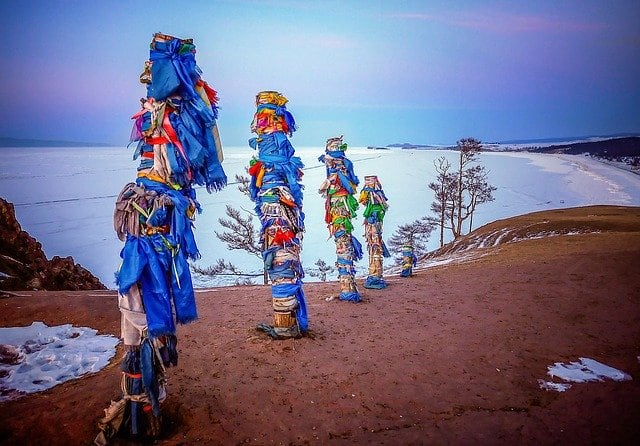
Sacred Shamanic Places
These are a series of geographical elements that are considered special places for the transition of shamanic journeys, which is why they are considered sacred places that take on vital importance in their practices, among them are:
The sacred tree
Its location consolidates one of the most important sacred sites of shamanism. The most famous tree is the Yggdrasil, known as the "ash tree of the universe" or "the tree of life", typical of Nordic mythology. However, it is known that all cultures practicing shamanism have their own sacred tree. Trees such as apple trees, oaks, cypresses and laurels usually appear for this purpose.
The cave
The location and use of caves represents the perfect space for shamanism, as it is considered the purest representation of the connection between the return to the womb, with the earth element, and the connection with the ancestors. If we refer to the first human beings and their habits, the cave represents a fundamental space, since it has been the refuge for many of these communities, as well as the place of worship where several representations have been found that show the connection of man with the environment that surrounds him in his daily life, since they leave evidence on the walls of the experiences of these first communities.
The staircase
Although it may sound a little strange, the truth is that the staircase comprises one of the most important transition sites within Shamanism, especially those in the shape of a spiral that may be curious to anyone interested in getting started in Shamanism, since it is precisely the shape of this staircase that symbolizes the transition to another space. The stairs do not necessarily "lead" to a specific place, as their construction takes on a symbolic value of connection with the underworld.
The bridge and the well
Similar to the representation of the staircase, the bridge also takes on a sense of transition, however, it is taken because it crosses a stream of water, so it represents this connection as an element that is capable of connecting realities. Likewise, it takes a great value as an element that allows to overcome narrow paths or with difficulty, uniting the two worlds where the water symbolizes the separation of realities from the borders.
Following the connection with the element of water, the well also takes on great meaning in shamanism, even if it is a well made by human beings or natural, so it is directly related to the rites of divination, as well as miraculous healings and even legends of immortality.
The lake and the river
The lakes are also one of the sacred spaces of this set of beliefs since it is taken as a kind of door that gives access to the other world. A great variety of myths and legends also appear in them, including strange animals that live within its waters, so that they represent one of the main centers of worship, but also of pilgrimage. An example of this is Lake Titicaca, the highest lake in the world, whose waters are the sweetest in which there are very important legends.
Likewise, another of the water currents, the rivers, also represent one of the most important spaces of shamanism, as the river is considered as a giver of life and also as a way of access to the other world.
The mountains
On the other hand, the mountains in shamanism are the representation of the natural way of access to the dwelling of the gods who are found in the beyond. While many cultures have a deep respect for mountains, in shamanism they are also revered and feared in equal measure. To climb mountains is to be able to be much closer to the gods. In addition, mountains represent access to secret places that can hold treasures, being the only constructions that can bring humans closer to heaven.
Shamanism survives today in the world, especially in indigenous peoples where its value prevails and their beliefs are closely linked to the practices of their daily lives. Likewise, the practice of the beliefs that shamanism brings together lives mostly in rural areas, such as jungles, deserts, tundras and other spaces, including also urban areas, as it has been found in towns, suburbs, cities and villages, extended especially in the American continent.
Spiritual call of the shaman
Although there is talk of a shamanic initiation process, the belief in a call from the mediums has also stood out, which is explained as a form of inheritance of shamanic work that can pass from one person to another through a series of extraordinary processes including visions of astral travel, among others.
Under this premise, the shaman who has received the call can walk without a fixed direction in the process, as well as move away from his family and clans; isolation which commits him in his search until he finds it.
In this process, the shaman understands the call and understands the mission he has from that moment on in society. However, before taking any action, he must overcome a series of tests that allow him not only to strengthen himself but also to lead him to a space of abandonment over the life he has led up to that moment, moving on to spiritual rebirth.
From the moment of the call, the shaman begins to know the secrets and hidden aspects of the rites, as well as has an approach to the spiritual language, the names and terms of the spiritual guides he will have, and even receives the identification of a part of the evil spirits of the spirit world.
Types of Shamanism in the World
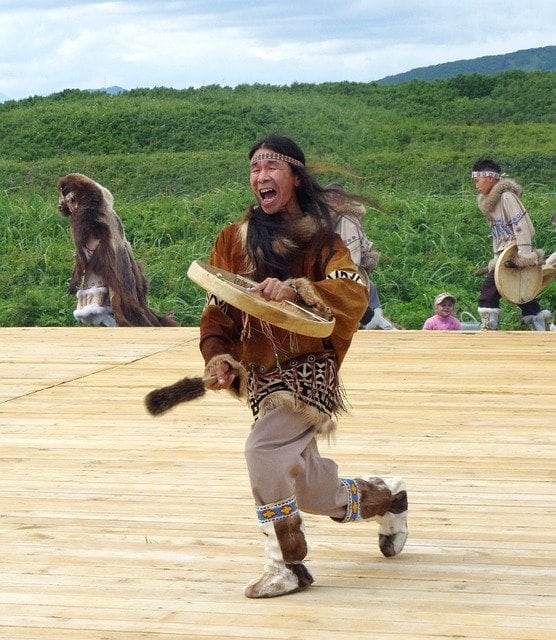 View Entire Post
View Entire Post 















